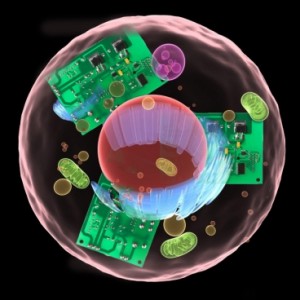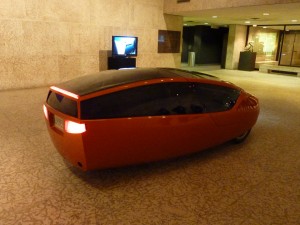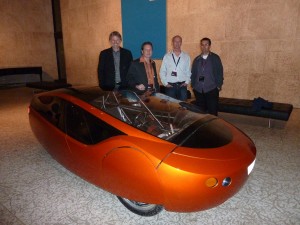Open access to science research papers seems only right given that most Canadian research is publicly funded. (As I understand it most research worldwide is publicly funded.)
This week, Princeton University declared that their researchers’ work would be mostly open access (from the Sept. 28, 2011 news item on physrog.com),
Prestigious US academic institution Princeton University has banned researchers from giving the copyright of scholarly articles to journal publishers, except in certain cases where a waiver may be granted.
Here’s a little more from Sunanda Creagh’s (based in Australia) Sept.28, 2011 posting on The Conversation blog,
The new rule is part of an Open Access policy aimed at broadening the reach of their scholarly work and encouraging publishers to adjust standard contracts that commonly require exclusive copyright as a condition of publication.
Universities pay millions of dollars a year for academic journal subscriptions. People without subscriptions, which can cost up to $25,000 a year for some journals or hundreds of dollars for a single issue, are often prevented from reading taxpayer funded research. Individual articles are also commonly locked behind pay walls.
Researchers and peer reviewers are not paid for their work but academic publishers have said such a business model is required to maintain quality.
This Sept. 29, 2011 article by James Chang for the Princetonian adds a few more details,
“In the interest of better disseminating the fruits of our scholarship to the world, we did not want to put it artificially behind a pay wall where much of the world won’t have access to it,” committee chair and computer science professor Andrew Appel ’81 said.
The policy passed the Faculty Advisory Committee on Policy with a unanimous vote, and the proposal was approved on Sept. 19 by the general faculty without any changes.
A major challenge for the committee, which included faculty members in both the sciences and humanities, was designing a policy that could comprehensively address the different cultures of publication found across different disciplines.
While science journals have generally adopted open-access into their business models, humanities publishers have not. In the committee, there was an initial worry that bypassing the scholarly peer-review process that journals facilitate, particularly in the humanities, could hurt the scholarly industry.
At the end, however, the committee said they felt that granting the University non-exclusive rights would not harm the publishing system and would, in fact, give the University leverage in contract negotiations.
That last comment about contract negotiations is quite interesting as it brings to mind the California boycott of the Nature journals last year when Nature made a bold attempt to raise subscription fees substantively (400%) after having given the University of California special deals for years (my June 15, 2010 posting).
Creagh’s posting features some responses from Australian academics such as Simon Marginson,
Having prestigious universities such as Princeton and Harvard fly the open access flag represented a step forward, said open access advocate Professor Simon Marginson from the University of Melbourne’s Centre for the Study of Higher Education.
“The achievement of free knowledge flows, and installation of open access publishing on the web as the primary form of publishing rather than oligopolistic journal publishing subject to price barriers, now depends on whether this movement spreads further among the peak research and scholarly institutions,” he said.
“Essentially, this approach – if it becomes general – normalises an open access regime and offers authors the option of opting out of that regime. This is a large improvement on the present position whereby copyright restrictions and price barriers are normal and authors have to attempt to opt in to open access publishing, or risk prosecution by posting their work in breach of copyright.”
“The only interests that lose out under the Princeton proposal are the big journal publishers. Everyone else gains.”
Whether you view Princeton’s action as a negotiating ploy and/or a high minded attempt to give freer access to publicly funded research, this certainly puts pressure on the business models that scholarly publishers follow.
arXiv, celebrating its 10th anniversary this year, is another open access initiative although it didn’t start that way. From the Sept. 28, 2011 news item on physorg.com,
“I’ve heard a lot about how democratic the arXiv is,” Ginsparg [Paul Ginsparg, professor of physics and information science] said Sept. 23 in a talk commemorating the anniversary. People have, for example, praised the fact that the arXiv makes scientific papers easily available to scientists in developing countries where subscriptions to journals are not always affordable. “But what I was trying to do was set up a system that eliminated the hierarchy in my field,” he said. As a physicist at Los Alamos National Laboratory, “I was receiving preprints long before graduate students further down the food chain,” Ginsparg said. “When we have success we like to think it was because we worked harder, not just because we happened to have access.”
Bill Steele’s Sept. 27, 2011 article for Cornell Univesity’s ChronicleOnline notes,
One of the surprises, Ginsparg said, is that electronic publishing has not transformed the seemingly irrational scholarly publishing system in which researchers give their work to publishing houses from which their academic institutions buy it back by subscribing to journals. Scholarly publishing is still in transition, Ginsparg said, due to questions about how to fund electronic publication and how to maintain quality control. The arXiv has no peer-review process, although it does restrict submissions to those with scientific credentials.
But the lines of communication are definitely blurring. Ginsparg reported that a recent paper posted on the arXiv by Alexander Gaeta, Cornell professor of applied and engineering physics, was picked up by bloggers and spread out from there. The paper is to be published in the journal Nature and is still under a press embargo, but an article about it has appeared in the journal Science.
Interesting, eh? It seems that scholarly publishing need not disappear but there’s no question its business models are changing.



